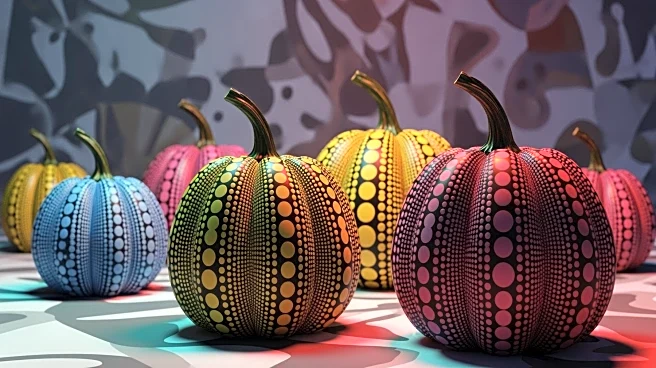What's Happening?
Yayoi Kusama's polka-dotted pumpkins have become a global phenomenon, appearing in art installations worldwide. Originating from Naoshima, Japan, these pumpkins are now featured in various cultural spaces,
including museums in South Korea, Australia, and the United States. Kusama's pumpkins, known for their vibrant colors and whimsical designs, have become iconic landmarks, drawing visitors and boosting museum attendance. The artist's work, characterized by repetition and polka dots, has gained popularity for its visual appeal and accessibility, making it a favorite among art enthusiasts and institutions.
Why It's Important?
Kusama's pumpkins have significant cultural and economic implications, attracting large audiences and enhancing the visibility of museums and galleries. The widespread appeal of her work demonstrates the power of art to transcend cultural boundaries and engage diverse audiences. Kusama's success highlights the potential for art to drive economic growth through increased tourism and cultural investment, known as the 'Bilbao effect.' Her work also challenges traditional notions of art value, as the proliferation of her pumpkins defies the idea that scarcity determines worth.
What's Next?
As Kusama's pumpkins continue to spread globally, museums may increasingly feature her work to attract visitors and boost attendance. The artist's creations are likely to remain popular, with new installations and exhibitions planned in various locations. Art institutions may explore ways to leverage Kusama's appeal to enhance their cultural offerings and engage broader audiences.
Beyond the Headlines
Kusama's pumpkins raise questions about the commercialization of art and its impact on cultural institutions. While her work is celebrated for its accessibility, it also prompts discussions about the balance between artistic integrity and market demands. Kusama's journey from the fringes to global recognition underscores the challenges faced by artists in gaining acceptance and the transformative power of art in shaping cultural narratives.













